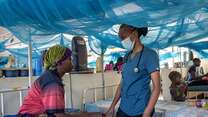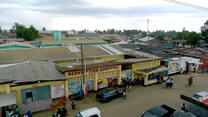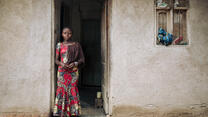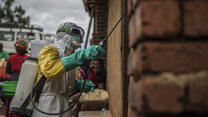The deadliest outbreak of Ebola will only be stopped when communities are fully incorporated as leaders and partners in the international response.
Foreign militaries have been deployed to help stop the deadliest, longest and most widespread Ebola outbreak ever recorded. But the global response has yet to fully enlist another kind of army needed to win this war — the very communities in West Africa that are being affected. The epidemic will only be stopped when communities are fully incorporated as leaders and partners in the response effort.
Global responders and governments must continue to scale up action, but scaling up will not be enough. In this Call to Action, we describe how the global response can be improved by describing the difference between community empowerment and mere consultation. We highlight three cases in which community leadership led to reductions in Ebola transmission, and provide recommendations on how community leadership can become a central element of the Ebola response scale-up.
The Ebola response will be most effective when it draws from two key sources of knowledge. The public health practitioners leading the global response have important knowledge about Ebola transmission and treatment. Less widely recognized, however, is the fact that communities in the affected areas hold essential knowledge of their own: knowledge about how to implement infection prevention measures in the unique context of their villages and neighborhoods.
For example, members of communities are best placed to mediate traditional West African values of hospitality with basic approaches to infection control; to care for the sick without touching them; and to provide proper respect to the deceased without risking infection. Community-led infection prevention can, if widely adopted and practiced in conjunction with treatment, help bring this outbreak to an end. Community leadership can help to ensure that distrust and misinformation is overcome; that individuals take basic precautions; that sick people are referred for treatment; that people who have been exposed are identified; and that victims are buried safely.
Community-led infection prevention has been limited thus far for several reasons. Ebola control measures challenge deeply established community practices, particularly those around burial. Second, community members often do not trust those who are communicating prevention measures. Finally, communities have only been given a limited role by governments and international responders. We need to scale up our actions, but we also need to act differently.
Fostering widespread community leadership for a rapidly spreading disease is a formidable challenge. But there is good news. Some individuals and communities have already taken the lead. In this document, we describe the actions of leaders in three very different contexts and explore what made them so effective.
Global responders seeking to stop the epidemic must understand what individuals and groups are already accomplishing. We must find the thousands of groups and individuals who know how to connect with communities and support them. Community leadership must be at the heart of the global response.



